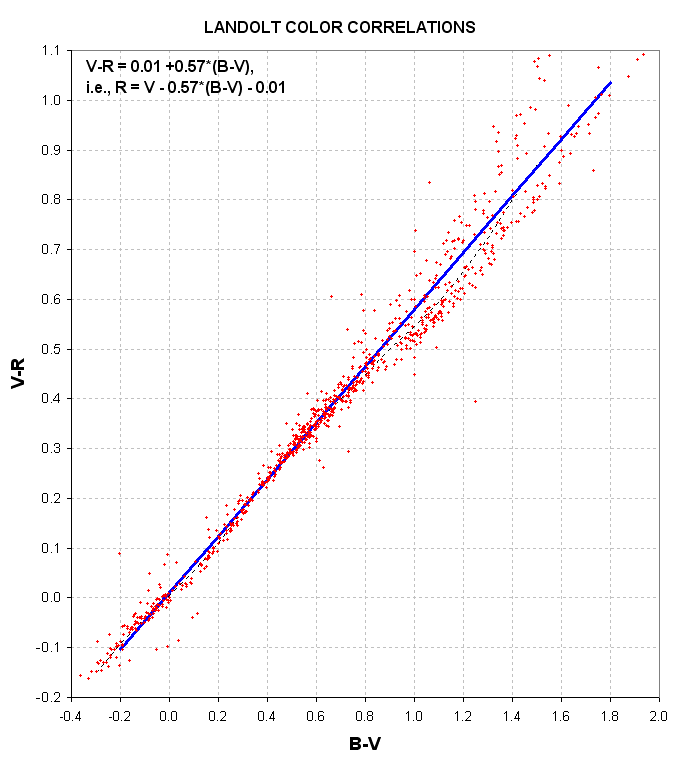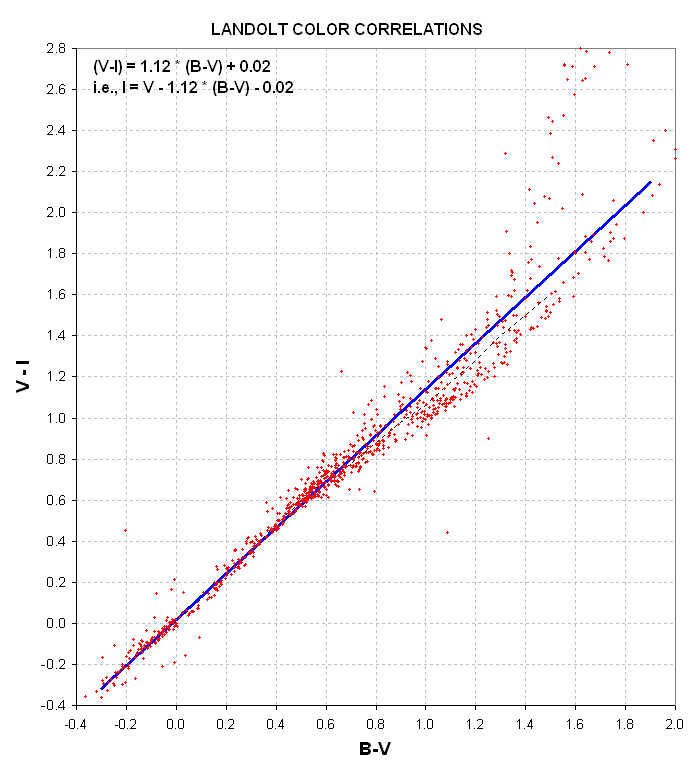Bruce L. Gary, Hereford Arizona Observatory (G95)
Last updated 2007.09.02
The 2MASS (2 Micron All Sky Survey) star catalog contains over 1/2
million entries of good quality J, H and K magnitudes. It is ~99%
complete for stars having V-mag < 17.5. A typical amateur's FOV will
contain dozens of stars with good quality JHK magnitudes. Ever since
these magnitude bands were defined and measurements were made with them
it has been known that most stars have spectrae that are "well behaved"
in the sense that if you know a star's color with any two bands it is
possible to predict colors for any other band pair. Of course, the
strength of the color/color correlation depend on the star's surface
temperature (color), but with the advent of an immense data base of
quality JHK magnitudes it is possible to convert JK color to any of the
other color pairs with an accuracy that meets most needs. One of the
first comprehensive analyses that demonstrated the reliability of these
color/color relationships was published by Caldwell et al (1993).
Others followed, but my favorite, and the most recently published, is
by Warner and Harris (2007). They show that for the color region -0.1
< J-K < +1.0 it is possible to infer B, V, Rc and Ic magnitudes
with the following SEs: 0.08, 0.05, 0.04 and 0.035.
B and V to RcIc
If you only have B and V magnitudes you can estimate Rc and Ic using the following graphs (with equations included).


The caution for using tese two plots is that they are valid for main sequence stars, which constitute ~90% of stars.
B and V to RcIc
J and K magnitudes don't exist for bright stars, but those will surely
be included in the Tycho list. But Tycho's Bt and Vt have to be
adjusted to resemble B and V. Here's how this simple conversion works:
V = Vt - 0.090 * (Bt - Vt)
B = V + 0.820 * (Bt - Vt)
or, if you want more accuracy:
V = Vt + 0.00097 - 0.1334 * (Bt - Vt) + 0.05486 * (Bt - Vt)^2 - 0.01998 * (Bt - Vt)^3 (
-0.25 < Bt - Vt < 2.0)
B - V = (Bt - Vt) - 0.007813 * (Bt - Vt) - 0.1489 * (Bt - Vt)^2 + 0.03384 * (Bt - Vt)^3 (
0.5 < Bt - Vt < 2.0)
B - V = (Bt - Vt) - 0.006 - 0.1069 * (Bt - Vt) + 0.1459 * (Bt - Vt)^2 (
-0.25 < Bt - Vt < 0.5
)
For more information about htis and other conversaion equations, click on this link:
http://www.aerith.net/astro/color_conversion.html
Return to calling web page: 
